Enquire about the ATLAS
Receive advice about product specifications and find the right Boschung equipment for your needs.
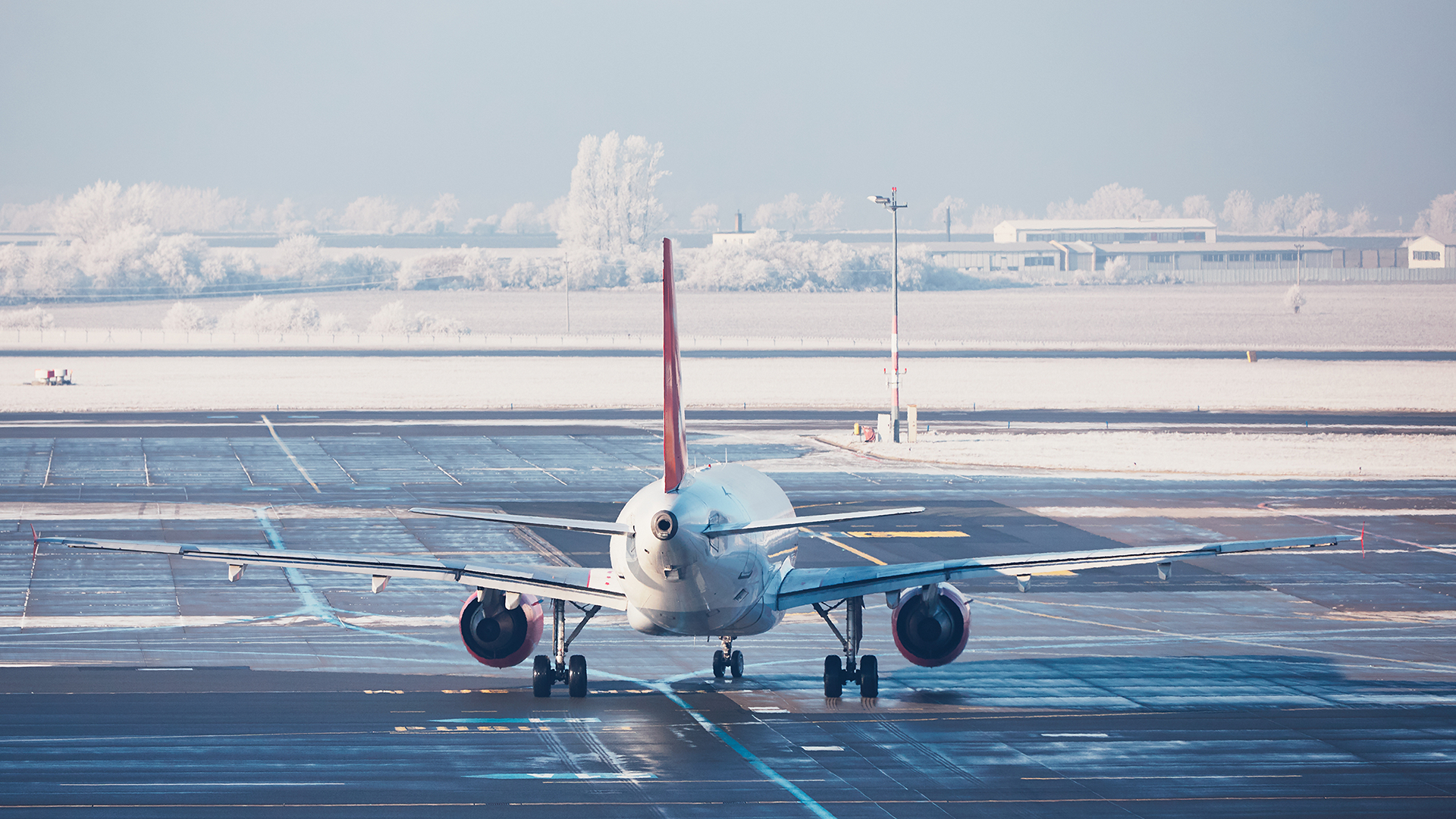
The Federal Aviation Administration (FAA) has established the Takeoff and Landing Performance Assessment (TALPA) initiative in an effort to globally harmonized runway condition assessment and with a clear objective to reduce runway excursions. Based on the combination of several field-proven sensing technologies, Boschung ATLAS (Automated Take-off and Landing Assessment System) provides all contaminant types and depth initiative. For year-round, 24/7 operations of your runway.
ATLAS monitors the presence of contaminants on the runway surface, which may have detrimental effects on braking actions, with an upmost danger of runway excursions. The system provides in real time surface condition assessment according to FAA’s requirement for the Takeoff and Landing Performance Assessment (TALPA) initiative
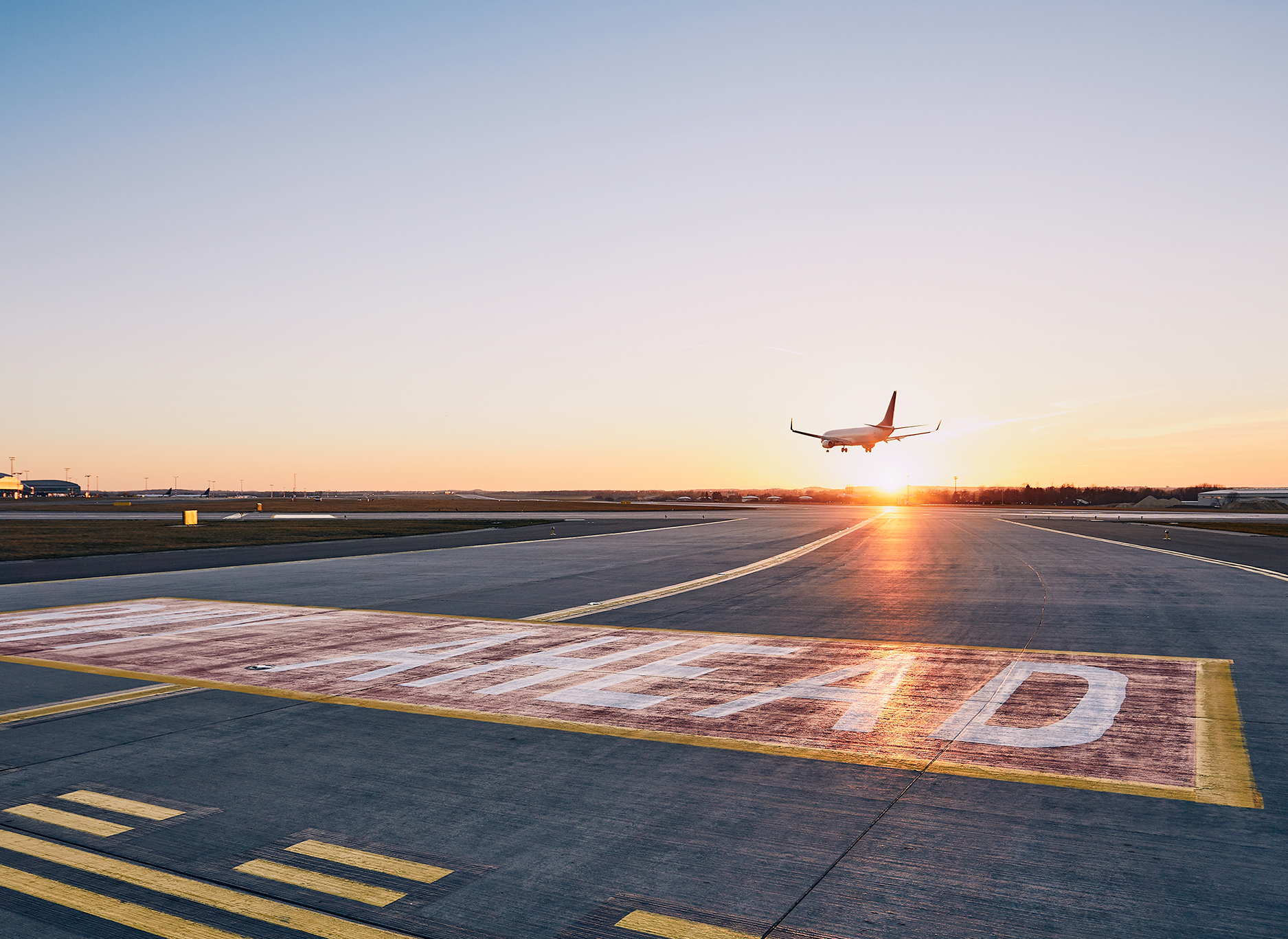
ATLAS performs thanks to a combination of sensors. The base is an ice early warning systems from Boschung or even third-party airport weather information system. To that, specific sensors have been developed:
Like all pavement sensors from the newest generations, the IT-RWY is installed in cases with connector for quick sensor replacement. It is designed for long lasting operations. Case and sensor have an excellent resistance to mechanical stress and chemical agents for use on airports. With very low power consumption, its robust design makes it the ideal candidate for runway monitoring applications.
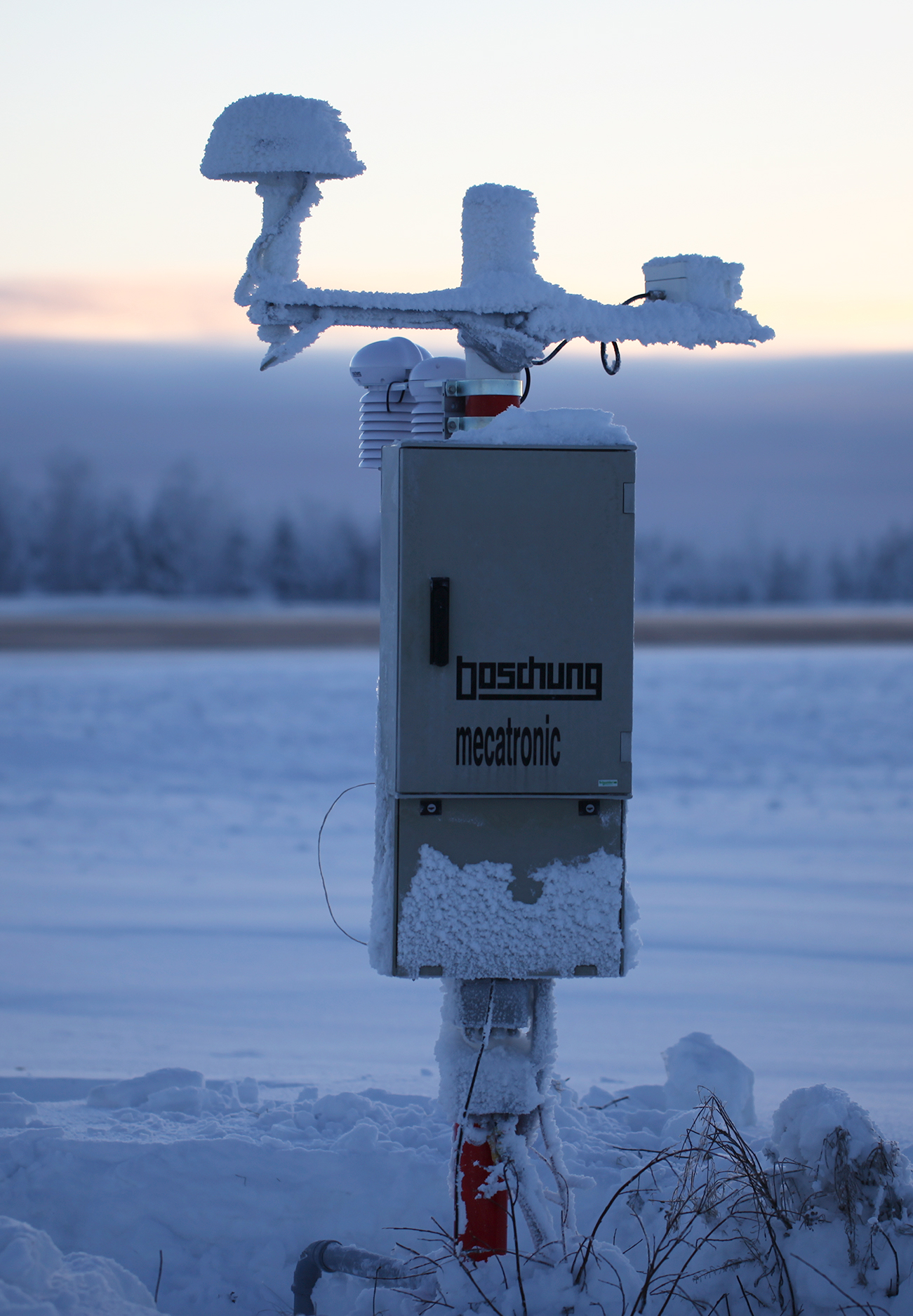
Modular and scalable system:
ATLAS is customized according to the specificities of the airports (international, middle-sized or unmanned airports) for all regions of the world with all climates. The number and types of measuring elements can for example vary depending on the length of the runways or on the frequency of snow falls. ATLAS can also make use of existing airport weather information systems.
No runway closure:
ATLAS permanently delivers the assessment of runway conditions without runway closure. Any change of runway conditions is recorded instantly, without the need for lengthy actions along the runway.
Support to inspection works:
When the overview of the runway conditions is clear on all thirds, supplementary visual inspections get unnecessary. ATLAS (live as well as historical) data also contribute to confirming the inspection works.
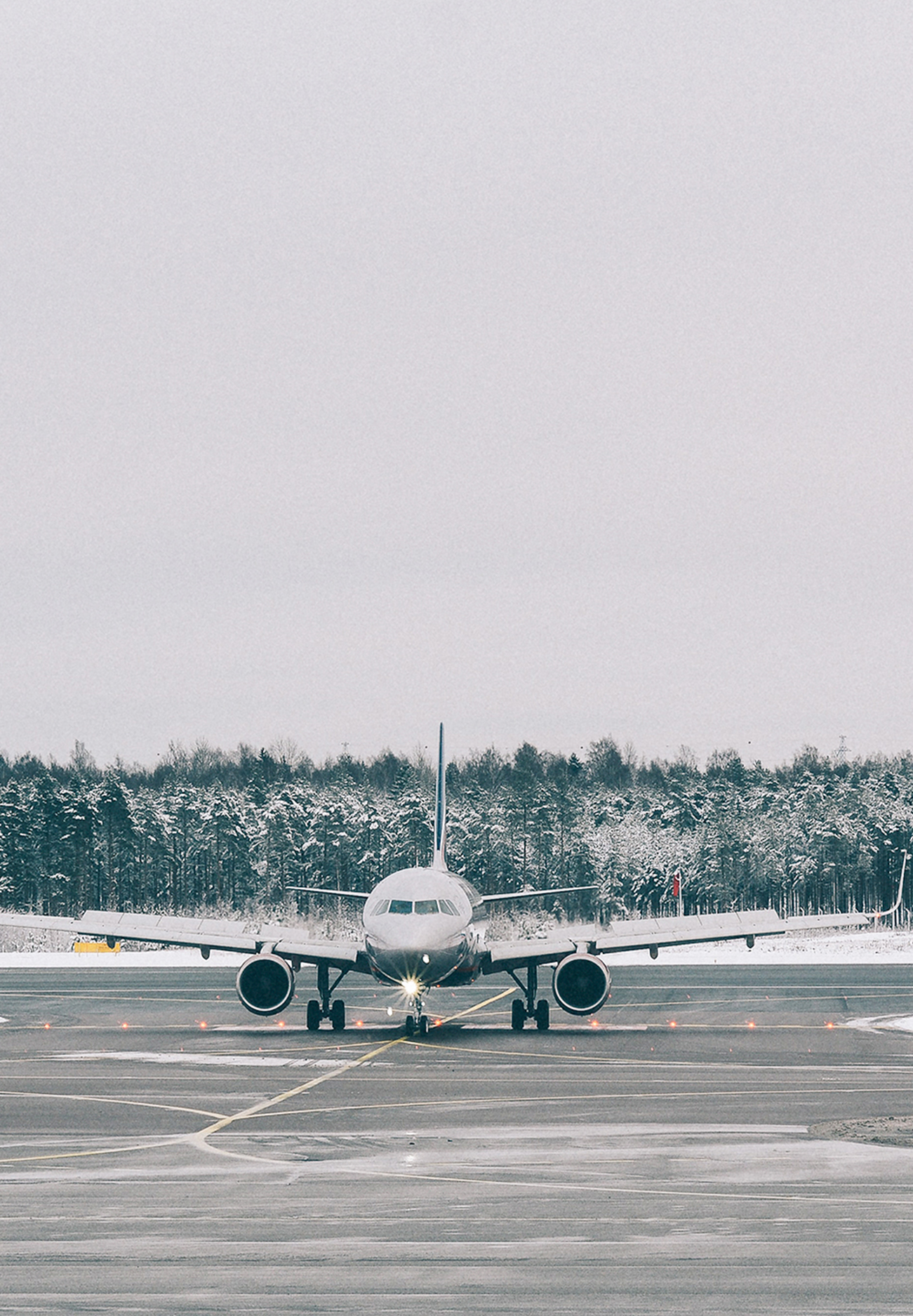
The results of the runway monitoring can be visualized in the bVision web-based software. All runways are displayed at a glance with all information from the Takeoff and Landing Performance Assessment initiative. RWYCC as well as contaminant type, depth and coverage are visible on the screen in a very user-friendly manner. Next to the codes of the runway, a color scheme implicitly brings clarity on the overview of runway conditions.
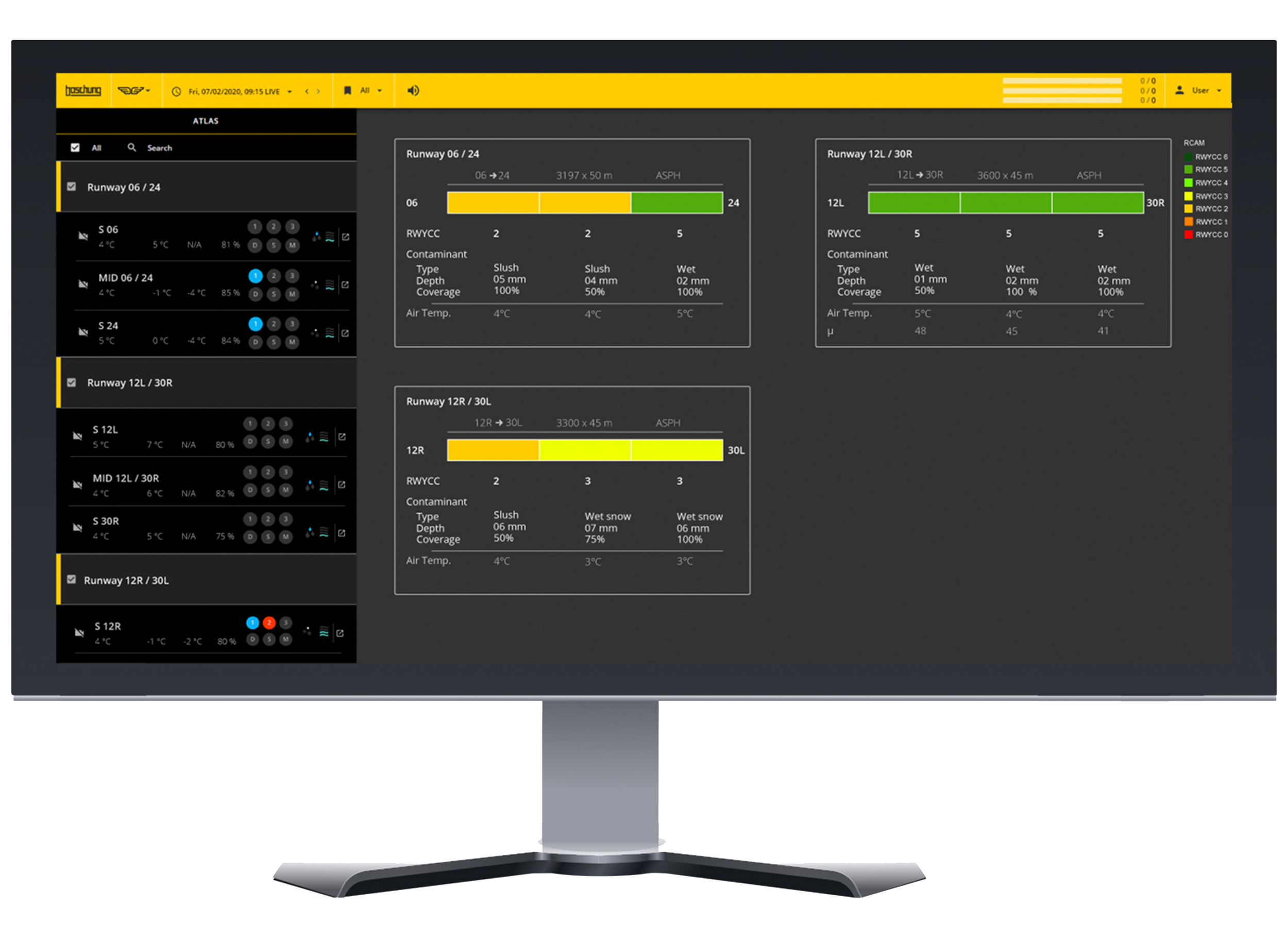
But this is not without any implication for airports, as they will need to adjust existing systems or even create completely new methods. Since they will need to adapt, why not adopting at once technologies that will allow them to automatically report all required parameters?
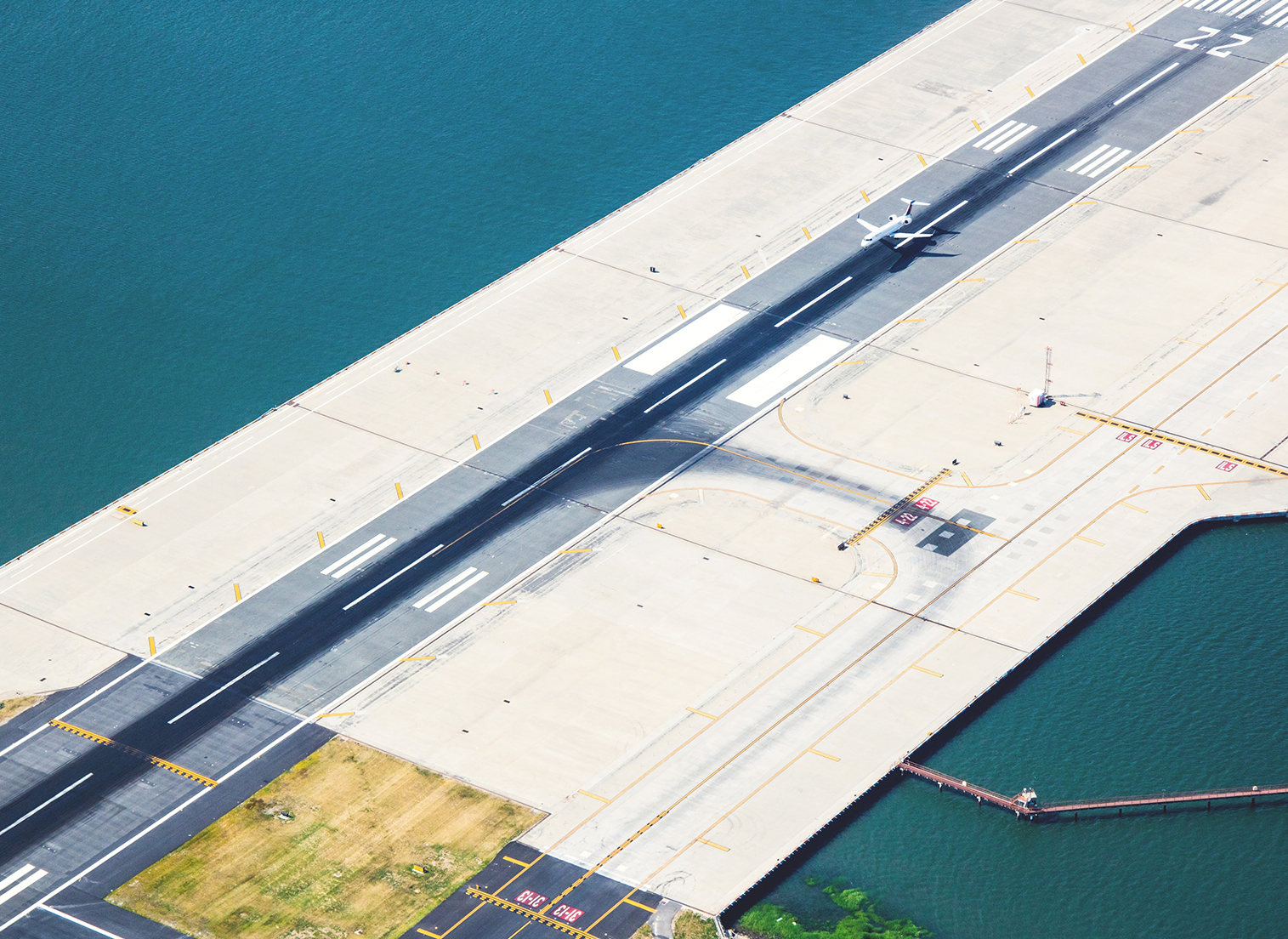
Receive advice about product specifications and find the right Boschung equipment for your needs.